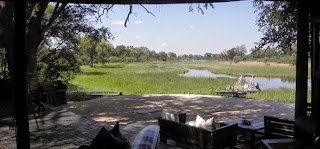When it comes to riding safaris, the expression “horses for courses” is particularly apt. For a start, the horses being ridden by guests will be specialists in their discipline; whether it is the Kalahari salt pans, the deserts of Namibia, the open plains of Kenya or the waters of the Okavango Delta, they all require horses with specialist experience in that type of terrain.
 |
| Thamalakane River Ride, Botswana |
Others prefer cross-breeds with Shire, Appaloosa, Clydesdale traits bred into thoroughbred and native stock. The common factor with all these, however, is not their conformation or looks but their suitability for the job. Schooling is, of course, important because visiting riders require a responsive animal. But training a safari horse requires more: they must be habituated to game, willing to gallop if required or stand still and graze while their riders watch and photograph game.
 |
| First familiarisation ride, Makgadikgadi Pans, Kalahari, Botswana |
Sourcing the right horses and then training them is one aspect of the process for riding safari operators, but the second is matching each horse with a suitable rider (or vice versa depending on your perspective).
Everyone has their own system for matching up the abilities of riders and horses on a safari. Ahead of the guests’ arrival, they will have completed forms indicating their size, weight and level of ability. But many operators will have to read between the lines because one person’s definition of experience may not be the same as another’s.
 |
| Riding for beginners at Ant's Nest, Waterberg, SA |
Ultimately, safety is paramount and an experienced riding safari consultant will advise the safari best suited to your ability. Ant’s Nest in South Africa, for example, is perfect for complete beginners and at Royal Tree Lodge in Botswana, there is an enclosed park of over a thousand acres which provides a safe predator-free environment for the less experienced. Whereas galloping across the Masai Mara with Offbeat Safaris is not for the faint-hearted.
 |
| Full pelt with Offbeat Safaris, Kenya |
In the end it is not, of course, an exact science, but an expert will be able to help you to find the best operators and terrain to meet your expectations together with guidance on relaying an accurate picture of your ability.







